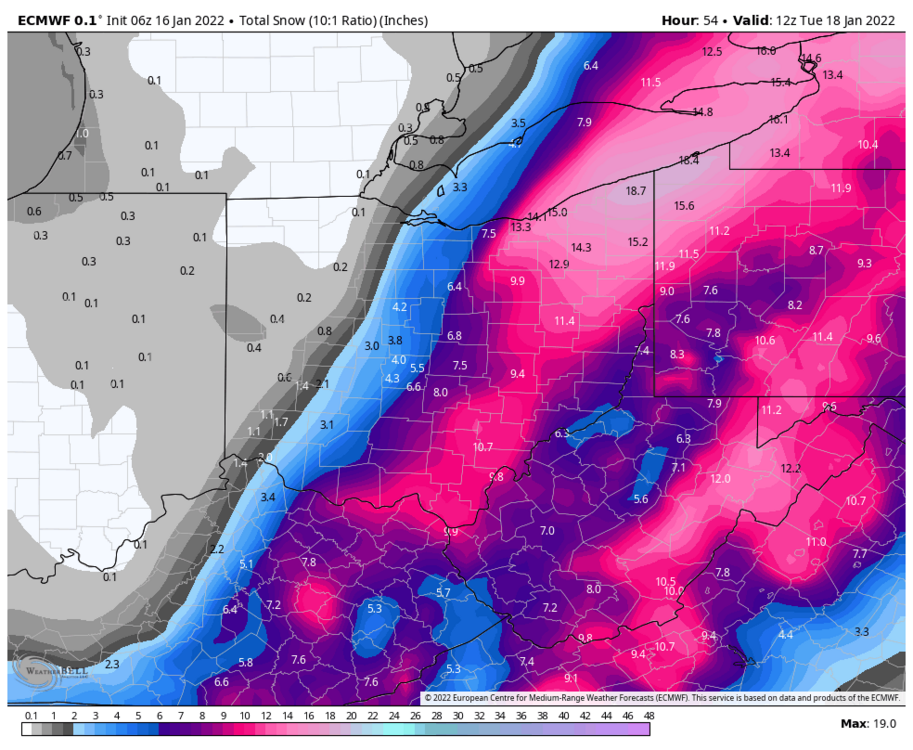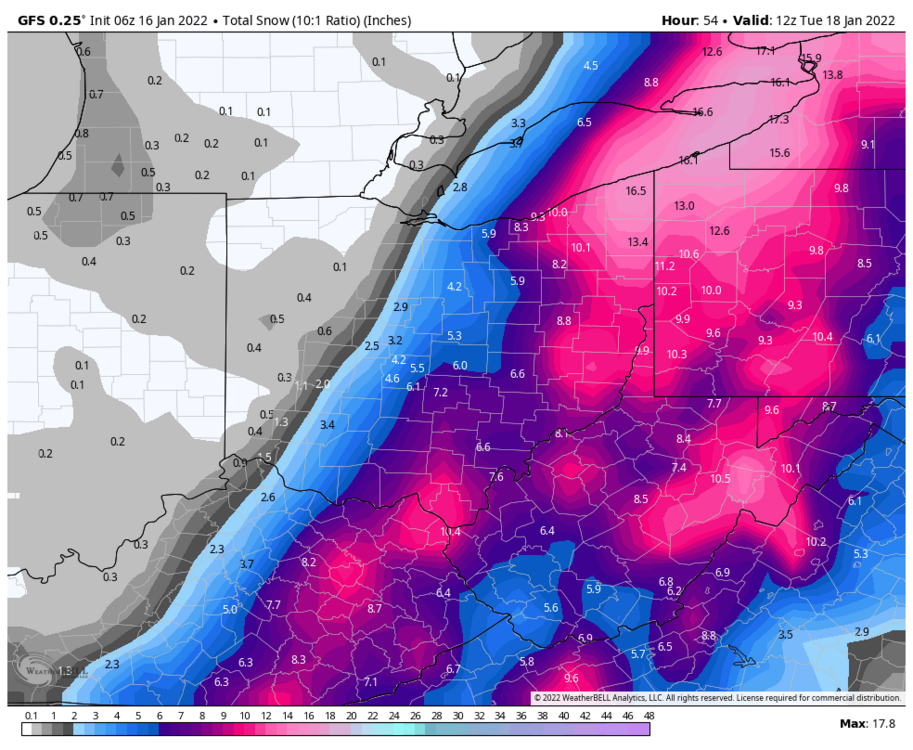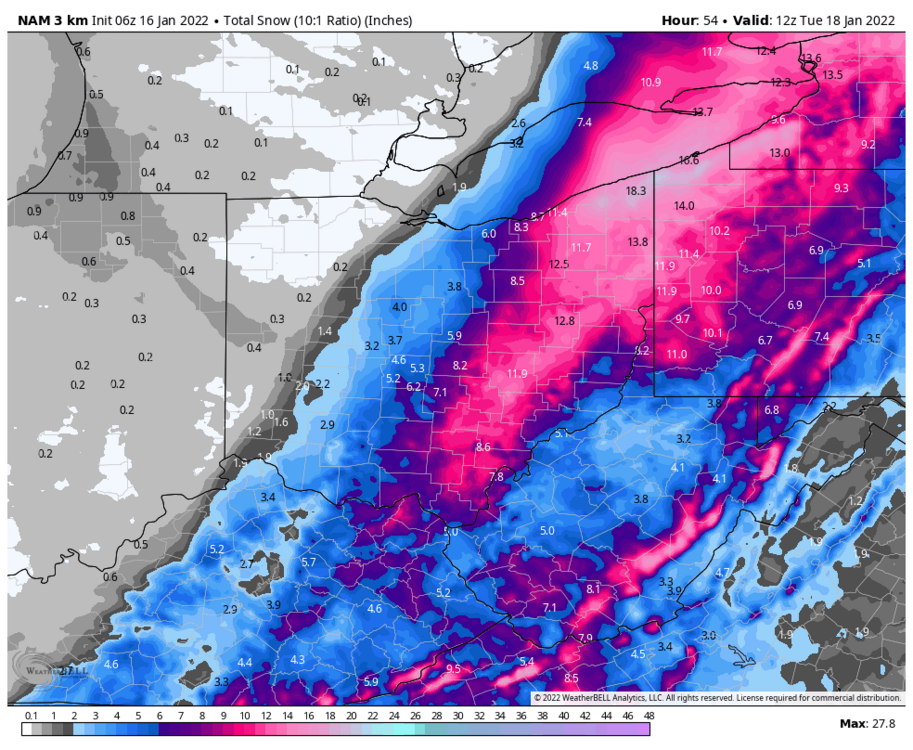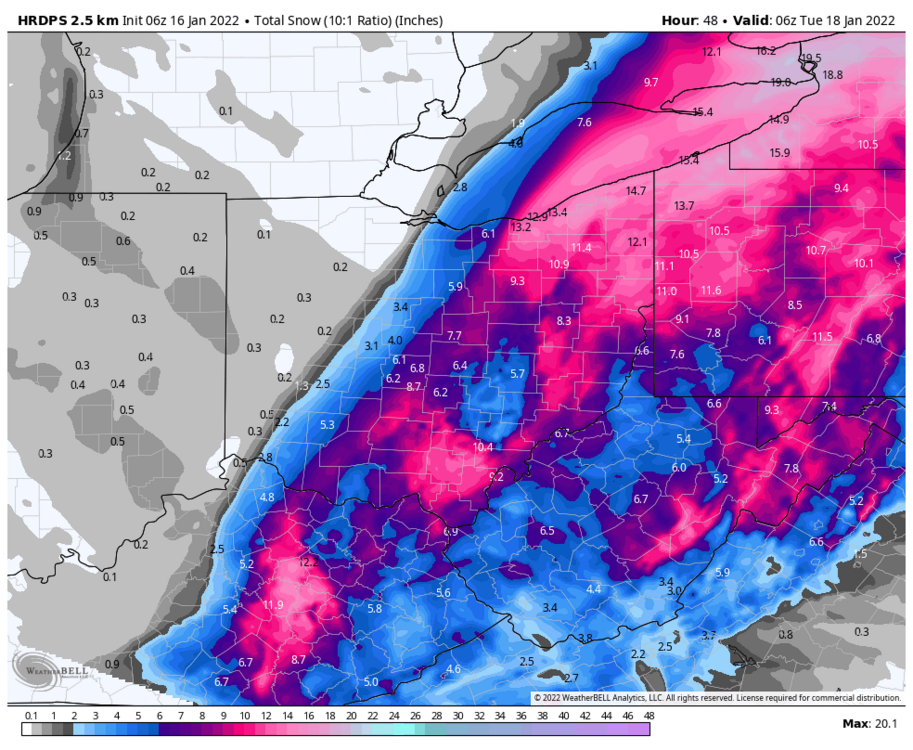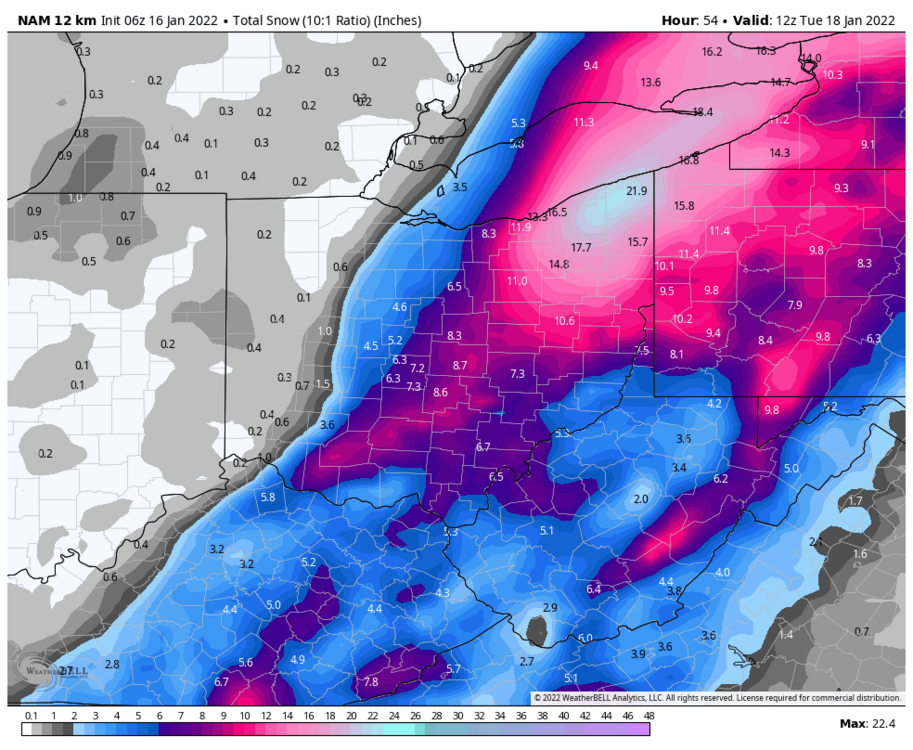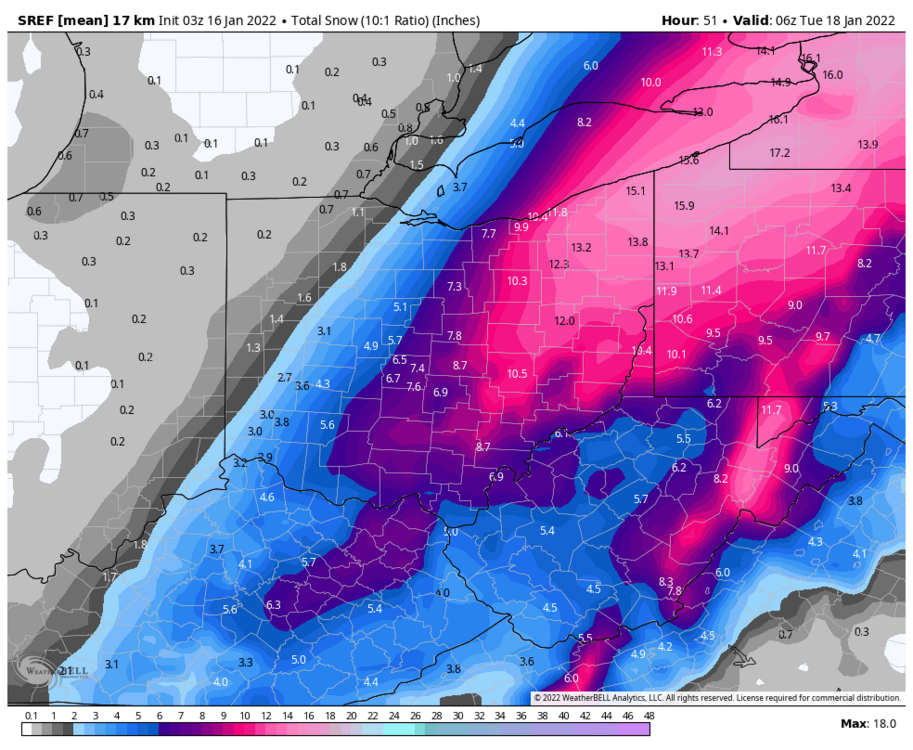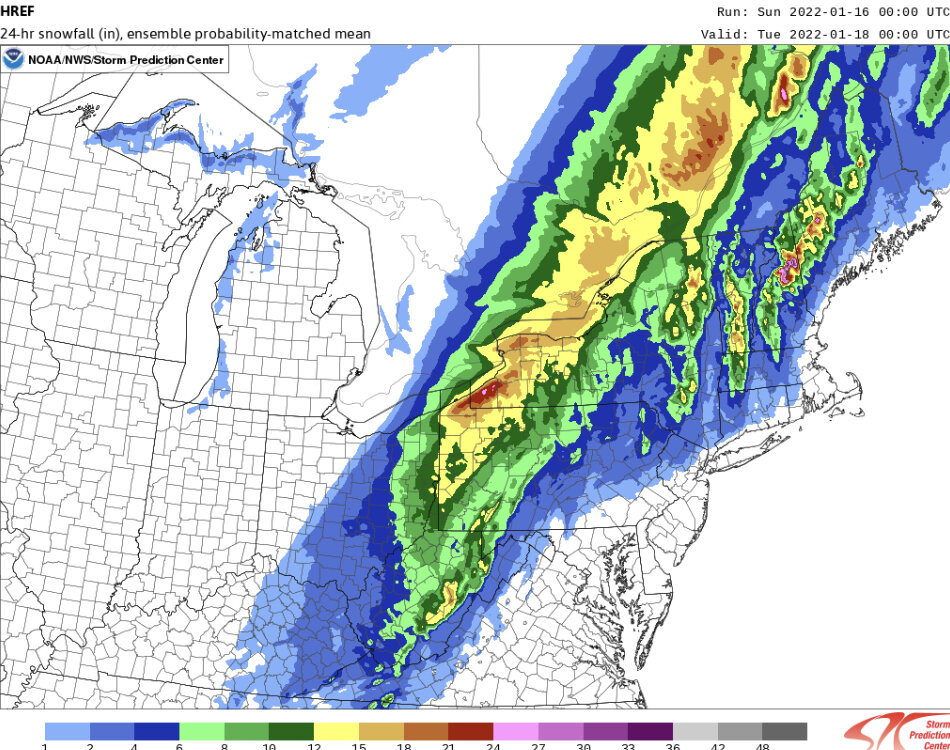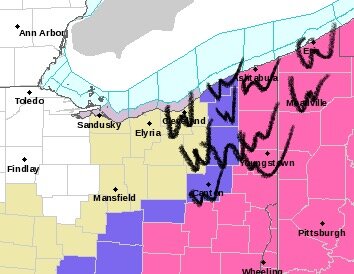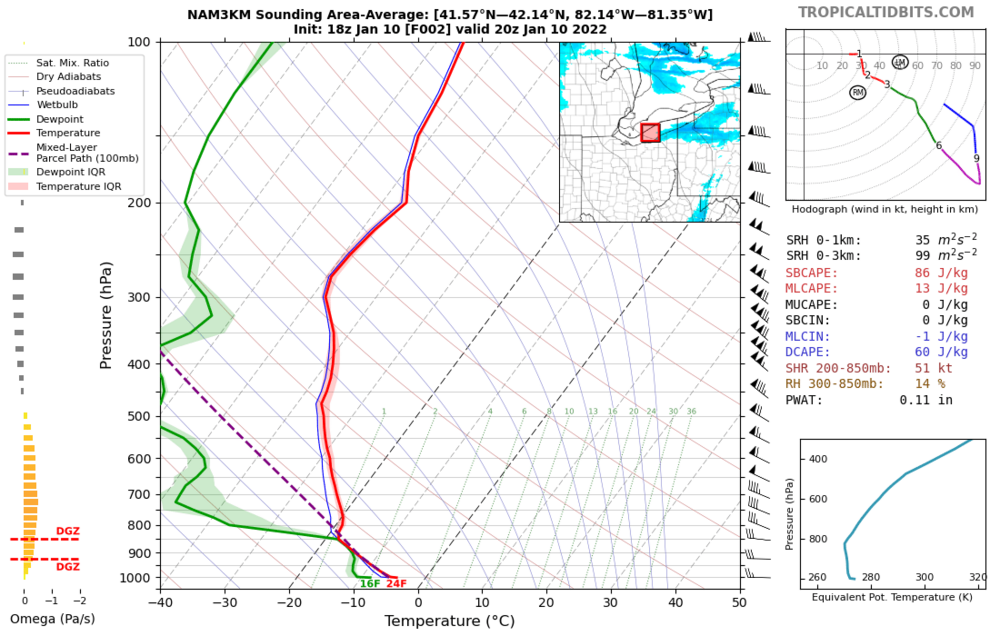
OHweather
Meteorologist-
Posts
5,004 -
Joined
-
Last visited
Content Type
Profiles
Blogs
Forums
American Weather
Media Demo
Store
Gallery
Everything posted by OHweather
-
Yeah the more organized bands are producing decent bursts that are accumulating and covering roads. Really nice dendrites too. The office near 77 and 480 has had a few borderline moderate bursts with radar showing heavier in the hills just to our south.
-
Winter 2021-22 Short/Medium Range Discussion
OHweather replied to Chicago Storm's topic in Lakes/Ohio Valley
Very much need the PNA to drop and the core of the cold to shift west for those outside of the southern/easternmost fringes of the sub-forum to have a shot at anything other than clippers. That seems like it will happen into February...but given how this winter has gone, watch it go from too warm to too cutter-y in 3 days. The current pattern very much is coming in on the colder side of the envelope compared to what was shown on the ensembles 10-15 days ago, which is why the southern Ohio Valley, eastern Great Lakes (and I-95) are getting the snow. -
Not an impressive lake effect set-up, but it will be in the air later tonight and Thursday. With a light flow and fluffy snow, any Lake Huron band will drop some accumulations, but unless it stalls for a time (which could result in a fluffy few inches for a small area) it'll be light stuff.
-
Trudged through a bit of fresh snow in the Metroparks in the eastern Cleveland suburbs this afternoon. Seemed like closer to 18" than 12"...it was a lot.
-
Average of a few measurements was 13-14" here.
-
Yeah there’s a silly amount of snow out there, eyeballing close to a foot. Not snowing as hard as when I went to bed but it’s still coming down. Wow.
-
More sleet than anything else between about 9:30 and 11:30 PM...some snow was mixed in but with the sleet it was compacting about as quick as it could accumulate. Back to mainly snow for the last 45 mins or so and coming down now, about 3" perhaps slightly more. As of midnight, 4.2" at KCLE, 5.0" at KYNG (they mixed too for a bit), and 7.1" (somehow) at KCAK. All 3 sites reported 1" per hour rates last hour, except for CLE, which reported 2" last hour. It's coming down!
-
I think they're a little too bullish but I think if you get into the NWS 3-5" (granted it can be argued that was a little conservative) I'd take it and run this winter. We need to get you out of the little screw hole between banding though and it should go back to snow and start accumulating quicker.
-
Huge bust for some of the models sure, but you’re in an advisory for 3-5” which still should be doable. Hi-res models had this mixing this evening. The low is closed off early, the warm air is wrapping in from the east. I’ve actually mixed a bit here. Any pockets of sleet will go away over the next few hours. You should still have enough liquid left to get into the 3-5” range, but 6”+ is probably off the table. I know that’s not that much after waiting this long to get something but if it hits the NWS forecast it’s hard to call it a huge bust (at least IMO). It seems like your area is sort of stuck in a little screw hole for now…things will move around but I think that’s why you’ve done so poorly and mixed so much so far. That storm last year you’re referencing stayed well under everyone’s forecasts (including mine) for a large area. I don’t think this is that, though some models will be pretty wrong for your area so it feels like you’re leaving something on the table.
-
Already nearing 1.5” here. Did mix with sleet a bit ago but went back to snow pretty quickly as rates ramped back up. There may be a bit of sleet at times the next few hours, but feel pretty good that it won’t significantly hurt totals…but it will keep the ratios below 10:1 tonight. It will be a dense, wet snow. Seems like a fast start with radar and short term models looking good for it to continue.
-
Copying over from the other Ohio thread... Big snow band starting to take shape parts of southern and eastern OH, and will ramp up more over the next few hours as it slowly moves north-northeast Multiple things contributing...THIS IS CLASSIC...you have weaker stability on the edge of the dry slot which can allow for slantwise convection (which is what typically occurs in mesoscale banded snow). You also have a TROWAL nosing in from the east (trough of warm air aloft), enhancing the mid-level temperature gradient. You already have a nice deform zone and some mid-level fgen, and that means ascent/rising air, which will cool the atmosphere further (and should gradually cause any pockets of mix to go away through the evening). This cooling will also increase the temperature gradient on the edge of the TROWAL, strengthening the fgen further and causing the band to really rip. Definitely some positive feedbacks here. The branch of the warm conveyor belt wrapping cyclonically into the deform zone is adding some deeper moisture to. Parts of eastern Ohio will absolutely rip snow this evening into the overnight. Travel will be nearly impossible, this is a high-end set-up for our region (and this will go into W PA, W NY, and eventually S Ontario too). The very heaviest may be east of CLE and CAK but this is an outstanding synoptic snowstorm for this region. I feel silly for being timid on the west trend pulling this into CLE until today. Sort of makes up for the last 6 weeks of not snowing at all.
-
Big snow band starting to take shape parts of southern and eastern OH, and will ramp up more over the next few hours as it slowly moves north-northeast Multiple things contributing...THIS IS CLASSIC...you have weaker stability on the edge of the dry slot which can allow for slantwise convection (which is what typically occurs in mesoscale banded snow). You also have a TROWAL nosing in from the east (trough of warm air aloft), enhancing the mid-level temperature gradient. You already have a nice deform zone and some mid-level fgen, and that means ascent/rising air, which will cool the atmosphere further (and should gradually cause any pockets of mix to go away through the evening). This cooling will also increase the temperature gradient on the edge of the TROWAL, strengthening the fgen further and causing the band to really rip. Definitely some positive feedbacks here. The branch of the warm conveyor belt wrapping cyclonically into the deform zone is adding some deeper moisture to. Parts of eastern Ohio will absolutely rip snow this evening into the overnight. Travel will be nearly impossible, this is a high-end set-up for our region (and this will go into W PA, W NY, and eventually S Ontario too). The heaviest may be east of some of the posters in this thread, but it's really an outstanding set-up for our region!
-
Radar is looking great! Frankly wouldn't shock me if most areas east of 77 have double digits by dawn with lake enhanced / effect to follow. This has turned into quite a storm. Was telling my dad, normally I'm excited for days before the snow starts. This had to trend so far to get to this point that it hasn't hit me that I will have an easy 6 or 8" by morning and quite possibly 10"+! Those of you in Geauga will get a larger lake contribution than I will. Plenty of snow to go around.
-
A lot of hi-res models had mixing all the way into NE OH and NW PA for a time later this evening, so I don't think the mix is a surprise. It "should" go to snow through the evening as better banding develops. I wouldn't call a bust yet but you'll know which way it's going in the next few hours if banding starts cranking and flips everyone back to snow. Along the OH river went back to snow as heavier rates developed over the last hour or so.
-
HKT itself is a nice, little town. Very wooded and hilly area so if you're into the outdoors there's some stuff to do. Even an ok little ski resort about an hour north of Hackettstown in Vernon, NJ. But, key words here are little town and wooded. If you're looking for more of a social life you may end up closer to Morristown. If you do look for an apartment in Hackettstown yourself feel free to reach out, I know people who lived in or still live in pretty much all the places in Hackettstown. Anyways, agree that I like where we're at. Nice little coating down here on all surfaces. Glad Summit and Cuyahoga finally are under warnings as I don't think it'll be even close to not being worth a warning, especially the eastern half of both counties. Could see them needing to add Wayne and Medina too just eyeballing the radar.
-
First few flakes have started here.
-
12z HREF pretty wet along and east of 77...maybe shave a little off due to low ratios to start, but a good idea IMO. The hi-res stuff is now west closer to the globals and may handle amounts and the cut-off with the very heavy band better. Someone may really get crushed in W PA or SW NY, and that could clip far eastern OH. 6z NAM probably too far west but this is a nice compromise.
-
The 6z NAM and RGEM were pretty far west. The hi-res stuff was well east yesterday and came way west. Feel like the 0z hi-res/HREF mean (the last image in my previous post) is a good starting point for the western cutoff (and it could be slightly too far east still IMO), and also max amounts where the heavy band pivots and where lake enhancement occurs. Will be curious to see the 12z run of that (and everything else)
-
Some pretty fun runs last night…the models that were west largely held, and the hi-res stuff that was east came west, though still has the Cleveland and Akron area on the fringe of heavier snow. 12z runs shall be interesting. This is shaping up to be decent in Cleveland and fairly memorable farther east.
-
Ha, Mars is based in Hackettstown, NJ where I was living the last few years. Small world! Congrats! While a last second nudge east is still possible with a low track east of the spine of the Apps, which causes me to want to lean a little low for the Cuyahoga and Summit County area, advisories at least seem like a fair bet for the eastern half of those counties, and if we see a nudge west warning amounts could get to Cleveland and Akron. Given some potential for less than advisory I can see issuing watches as a compromise, and then decide on nothing vs advisory vs warning tomorrow morning. Am nervous having nothing out when a small west shift brings warning amounts in with snow starting in 24 hours. Here’s what I’d do I put W’s in the CLE counties I’d have in a warning and W’s in the counties I’d have in a watch. Ok j/k I’d have warning where we have it and watch where we have advisory or nothing. I’d be very close to warning on Stark, Portage, Lake and Geauga too. I don’t really qualm with our current storm total snow forecast but precarious situation on the western fringe and having no headline makes me nervous. Curious to see the rest of the 0z models, expect a band of 1-2” per hour snow on the NW side of it’s a sharp gradient to much lighter amounts. Feel it’s likely the band at least gets into the easternmost tier of NE Ohio counties but if it gets west it would drop warning criteria snow. Feel like anyone east of 77 is in play but again feel best about the PA boarder counties and into PA. Where it pivots, perhaps somewhere near Erie or Buffalo, 18”+ of fairly wet dense snow is likely.
-
This is gettin close to being a memorable storm for CLE and CAK on east in Northeast Ohio. Feeing good about the YNG area and better about the Snowbelt. CLE still seems slightly in the outside looking in but the 0z NAM wasn’t a bad start. Will be curious to see the rest of the 0z models! Lake enhancement may add a fair bit east of CLE too. Banding May nuke on the northwest side of the storm, definitely will hit NW PA I think but may edge into NE Ohio, with a sharp cutoff to the west.
-
Well, models aren't shifting east or if anything, have edged west a bit. Feel like we'll probably see the watch expanded a row of counties west overnight tonight given these trends. Will be another day of interesting runs on Saturday! It'll be a sharp cut-off from warning criteria snow to just an inch or two, so small shifts can make a big difference for the Cleveland area.
-
Haha I did not (Sullivan is the name to look for). Probably won't have a part in any AFDs again until some point next week. Am in tomorrow but doing other stuff, then am off through Monday. I think at this point we're done with large trends. The big picture isn't changing. So for a place like Toledo I wouldn't be optimistic. I could be wrong...2-3 days ago I didn't think Cleveland had much of a shot...but I don't see a big NW trend in the cards. I can see subtle wiggles east or west. I personally feel there's a slightly better shot at warning criteria amounts in CLE's easternmost county than the AFD led on (though he certainly didn't rule it out). The northern stream interaction is tricky...if it dives in farther SW and sort of "sling shots" the storm a little more due N (as opposed to NE) for a time it may help, but if it dives in faster and isn't farther west it may also kick the larger storm east a bit quicker. I think there will be a heavy band that produces warning criteria snows near the NW fringe and a sharp cut-off to negligible amounts (and some lake effect/enhanced Monday into Monday night, which could help some even if the heaviest synoptic snow stays east...but there are mixed signals on if the LES is anything of note). My gut feeling is that warning amounts (6"+) get into Mahoning, Trumbull, and NW PA in CLE's CWA. However, I also think it's a sharp cut-off, and that there may only be a one county wide row of advisories west of that before dropping down to sub-advisory amounts (criteria is 4" for an advisory, guessing a 2-4" forecast would get one given lack of snow this season and impacting a Monday AM commute, so we'll consider "sub-advisory" a 1-3" forecast or less). I can see warning amounts getting one more tier west of what I just laid out (so to Summit/Geauga) with a west trend...can also see it edging east a county or two. That's the general zone I'm eying for the western edge of the heavier snow. LES will be a bit of a wild card either way...something like the RGEM only gets the heavy deform band to YNG and ERI, but at the end of the run has a look of moderate lake enhanced snow persisting well into Monday for the CLE area.
-
You can still get organized bands with strong winds, but if there's shear the stronger flow can make them harder to consolidate. The bigger issue is the stronger winds limit how much time the air spends over the lake. For the most part with lake effect, the air moving over the lake is not initially moist and unstable enough to produce heavy snow...but while moving the lake, heat and moisture flux from the water modify the air to the point where it can become moist and unstable enough to produce heavier snow. Stronger winds limit the time for that to happen. We have gotten good lake effect events with similar wind speeds as Monday before, but usually the airmass is already more humid before hitting the lake and / or there's an upstream connection or synoptic snow ongoing (which would be more lake enhancement)...in those cases, it doesn't take as long for the lake to modify the air over it to the point where you can get good snow. But in yesterday's case, with a dry airmass, no good upstream connection from Lake Michigan, and rapidly expanding ice over the western basin (which doesn't immediately kill the heat/moisture flux, but does limit it) it all added up on top of the stronger winds. Based on some glimpses through satellite today when it briefly cleared over part of the lake, your guesstimated ice map above is pretty close...it's locked up from just east of the islands points west at the moment, though as NEOH mentioned the winds over the next few days will shift it around a bit at least so it's not totally frozen solid yet. The system Sunday night into Monday is getting closer...my current gut feeling is that it gets too far southeast before phasing to be a credible threat for us, but models have been trending towards diving the initial shortwave so far west that it's slower and farther northwest when it rounds the corner, which is what we'd need as it'd phase with the shortwave diving out of the Midwest closer to the Mississippi Valley as opposed to over the Southeast...so another shift slower / northwest makes it interesting. There's some blocking in front of it but not enough to totally rule out snow into OH if it phases earlier. I'm not yet optimistic but it's a little closer than I would've thought even 24 hours ago.
-
This isn't a perfect proxy of the actual environment but is close, a near-initialization sounding off the 18z hi-res NAM over the lake. A few issues I think... There is some shear as you mentioned, with more westerly low-level winds veering somewhat more northwesterly in beneath the inversion. That will make it harder for a band to organize. The other issue is the flow was a little stronger than Friday's event, 30-40 knots below the inversion over the lake...was on the grids for winds today (ignore the previous comment saying I wouldn't be in the office today, that made for a fun morning on my part) and can say that almost every model was at least a few mph too weak on the winds, especially over the water compared to what was verifying. That didn't help, especially since the atmosphere was fairly dry. Lack of good upstream connection, dry airmass, and stronger wind over the lake isn't good. The other thing that stuck out to me was that winds over the central and western nearshore waters actually went WSW for a time, similar to on land, and there wasn't as great of a temperature difference between over the water and on the land as last Friday. Think that caused a lack of convergence too, so nothing to focus a band. There was better convergence near Erie and they did get a few inches today from parts of Ashtabula County into inland Erie County. Overall, think the dry airmass, no upstream help, stronger winds, shear, and lack of convergence all added up to the disorganized appearance today. Just not enough to really focus the bands. I think after Friday's event overperformed a bit with an upstream connection into the east side and a good band there, that when models hinted at some similarities there was an urge to jump on it again. It wasn't unfounded but there were some negatives to overcome. I thought we'd get more than we did! Have gotten a tenth or two this evening here.


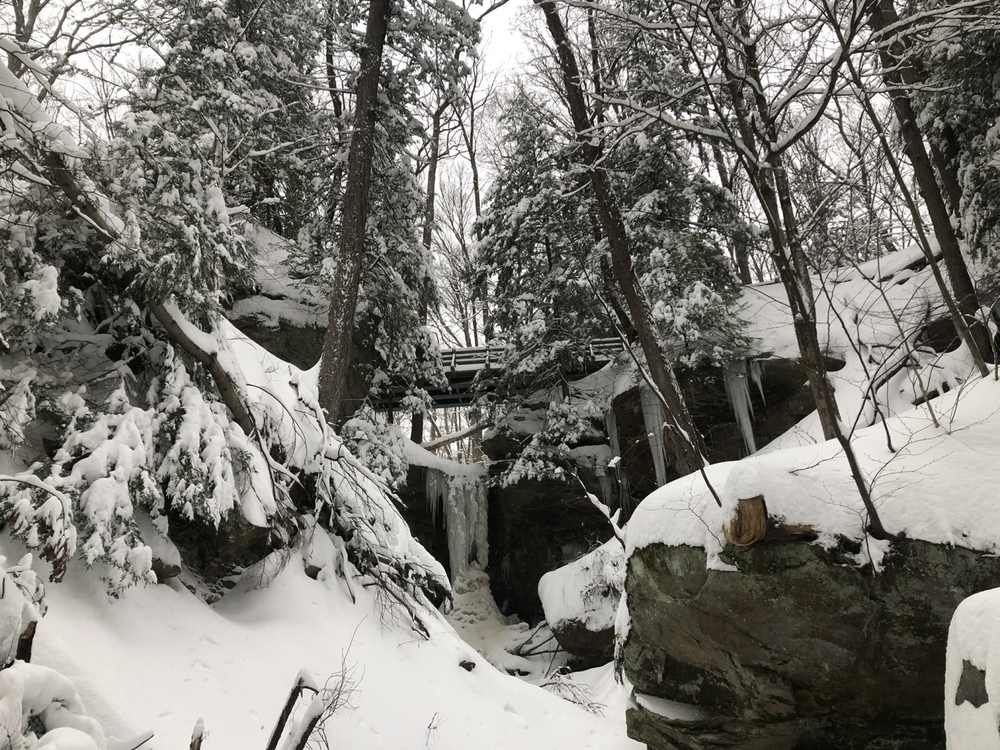
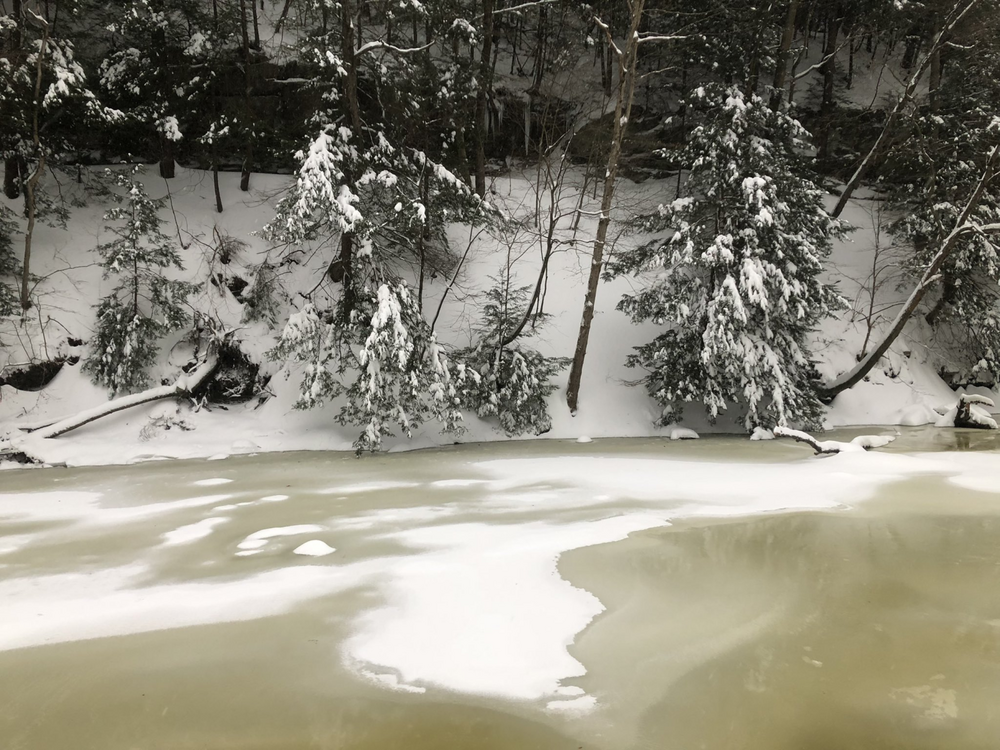
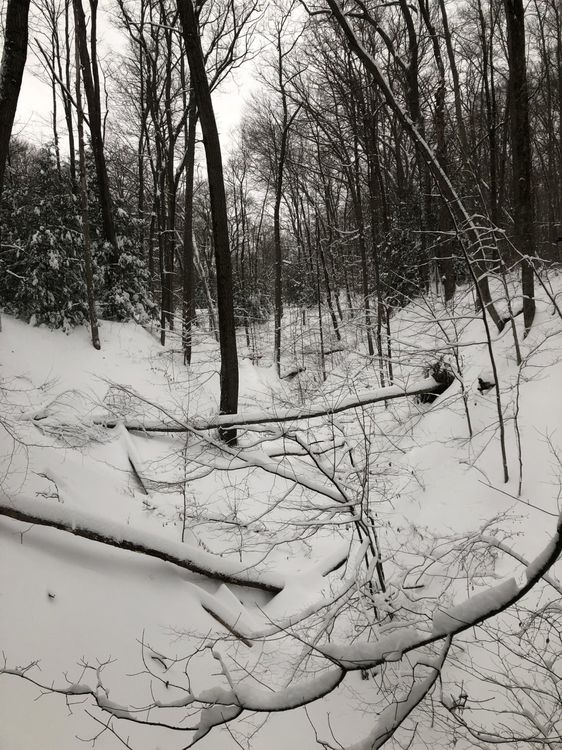
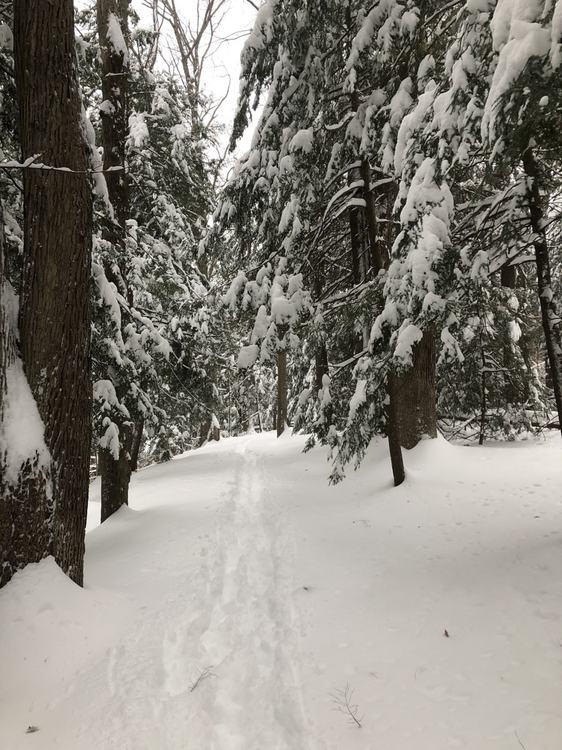
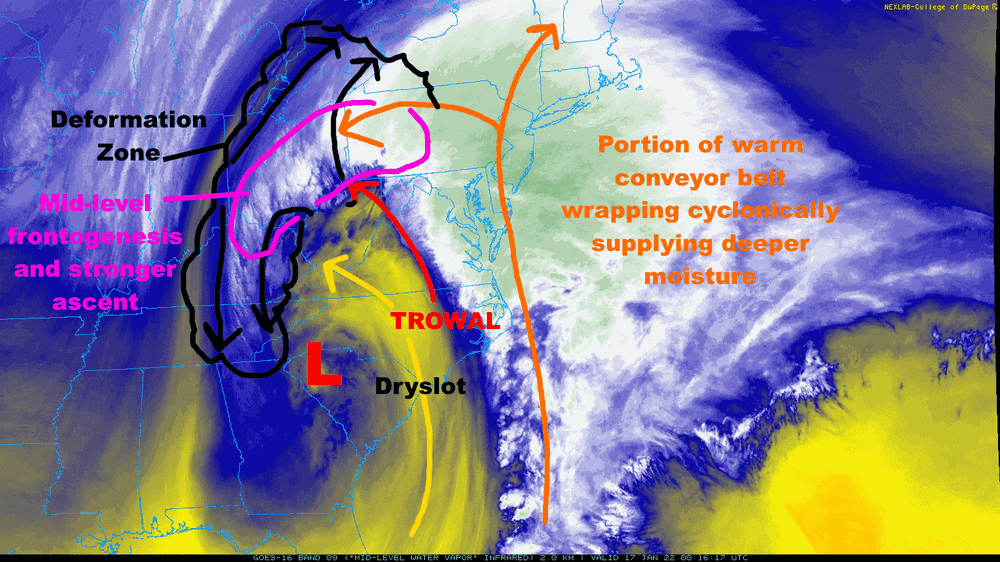


.thumb.png.cdc3b751fec3bc0286d1f476ffe6c6b9.png)
